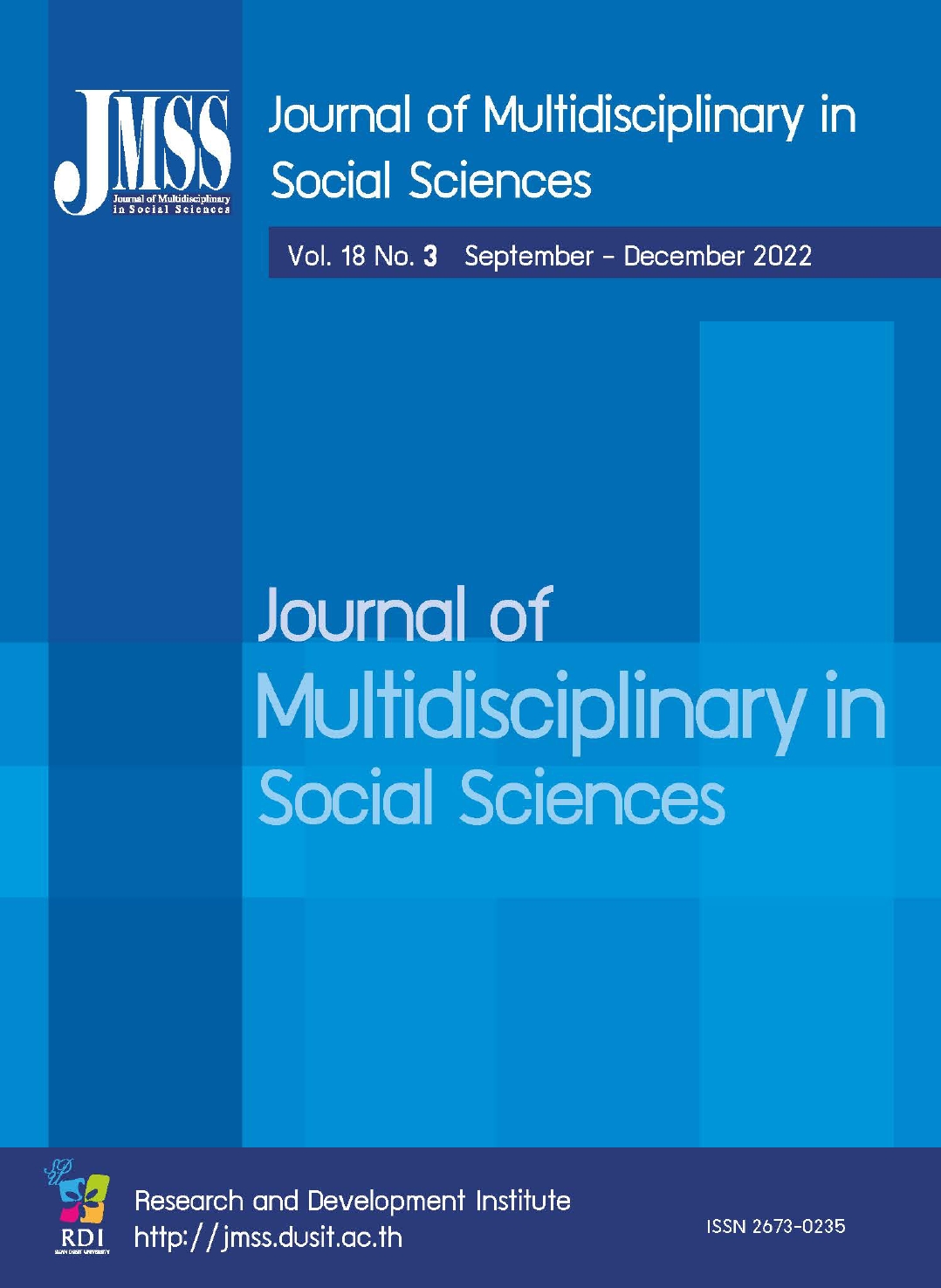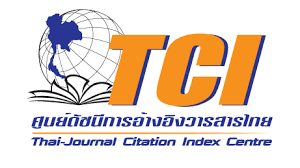The Study of Undergraduates' Satisfaction and Loyalty in Gocheck System
Keywords:
Satisfaction, Loyalty, Undergraduate, Gocheck systemAbstract
This research paper aims to explain the factors that impact undergraduate students' satisfaction and loyalty in Gocheck system. The conceptual framework was developed based on previous three theoretical models, and derived with seven variables for the study namely, image, perceived valve, perceived quality, service quality, satisfaction, trust, and loyalty. The research has applied quantitative approach in data collection and analysis by distributing questionnaires to undergraduate students of three majors who are currently using Gocheck system at Yunnan Normal University, China (n=500). Multistage sampling techniques of judgmental sampling, stratified sampling and convenience sampling were used for data collection. The collected data were analyzed using the Structural Equation Model (SEM) and Confirmatory Factor Analysis (CFA) to confirm model fit, reliability, and validity of the constructs, and test the research hypotheses proposed. The results explicated that undergraduates' loyalty in Gocheck system was formulated from their satisfaction, which the direct antecedents of satisfaction were trust and perceived value, and indirectly affect by perceived quality. Image, perceived quality, and service quality has lack of direct significant effect on satisfaction. Therefore, the higher education institutions, system developers and marketing practitioners were advised to strengthen and promote the system performance, features, and functionalities in order to demonstrate the trust in the system and the advantages from services offered. This could help students by ensuring academic integrity in their scholarly works and foster their satisfaction and repetitive usage in Gocheck system.
References
Abratt, R., & Kleyn, N. (2012). Corporate identity, corporate branding and corporate reputations: reconciliation and integration. European Journal of Marketing, 46(7/8), 1048-1063.
Agarwal, U.A., & Narayana, S.A. (2020). Impact of relational communication on buyer–supplier relationship satisfaction: role of trust and commitment. Benchmarking: An International Journal, 27(8), 2459-2496.
Akroush, M.N., & Mahadin, B.K. (2019). An intervariable approach to customer satisfaction and loyalty in the internet service market. Internet Research, 29(4), 772-798.
Al-Mamary, Y.H., & Shamsuddin, A. (2015). Testing of The Technology Acceptance Model in Context of Yemen. Mediterranean Journal of Social Sciences, 6(4), 268-273.
Bahri-Ammari, N., Van Niekerk, M., Ben Khelil, H., & Chtioui, J. (2016). The effects of brand attachment on behavioral loyalty in the luxury restaurant sector. International Journal of Contemporary Hospitality Management, 28(3), 559-585.
Balaji, M.S., Roy, S.K., & Wei, K.K. (2016). Does relationship communication matter in B2C service relationships? Journal of Services Marketing, 30(2), 186-200.
Ball, D., Coelho, P.S., & Machas, A. (2004). The role of communication and trust in explaining customer loyalty. European Journal of Marketing, 38(9/10), 1272-1293.
Bi, L., & Ye, J. (2019). Study on the detection of the repetition rate of bachelor's thesis and its standardization promotion strategy. Library Forum, (3),10-19.
Bricci, L., Fragata, A., & Antunes, J. (2016). The effects of trust, commitment and satisfaction on customer loyalty in the distribution sector. Journal of Economics, Business and Management, 4(2), 173-177.
Cassia, F., Cobelli, N., & Ugolini, M. (2017). The effects of goods-related and service-related B2B brand images on customer loyalty. Journal of Business & Industrial Marketing, 32(5), 722-732.
Chang, C.-C., & Hung, J.-S. (2018). The effects of service recovery and relational selling behavior on trust, satisfaction, and loyalty. International Journal of Bank Marketing, 36(7), 437-1454.
Chang, Y.H., & Yeh, C.H. (2017). Corporate social responsibility and customer loyalty in intercity bus services. Transport Policy, 59, 38-45.
Chatterjee, S., Shainesh, G., & Sravanan, C.N.S. (2018). Does intention translate into action? Investigating the impact of loyalty intention on future usage. Journal of Indian Business Research, 10(2), 151-169.
Chiu, W., Zeng, S., & Cheng, P.S.T. (2016). The influence of destination image and tourist satisfaction on tourist loyalty: a case study of Chinese tourists in Korea. International Journal of Culture, Tourism and Hospitality Research, 10(2), 223-234.
Cobelli, N., Bonfanti, A., Cubico, S., & Favretto, G. (2019). Quality and perceived value in career guidance e-services. International Journal of Quality and Service Sciences, 11(1), 53-68.
Dehghan, A., Dugger, J., Dobrzykowski, D., & Balazs, A. (2014). The antecedents of student loyalty in online programs. International Journal of Educational Management, 28(1), 15-35.
Dimitriadis, E., & Zilakaki, E. (2019). The effect of corporate social responsibility on customer loyalty in mobile telephone companies. International Journal of Economics and Business Administration, 3(4), 433-450.
Elsäßer, M., & Wirtz, B.W. (2017). Rational and emotional factors of customer satisfaction and brand loyalty in a business-to-business setting. Journal of Business & Industrial Marketing, 32(1), 138-152.
Esterik-Plasmeijer, P., & Raaij, W. (2017). Banking system trust, bank trust, and bank loyalty. International Journal of Bank Marketing, 35(1), 97-111.
Fornell, C., & Larcker, D. F. (1981). Evaluating structural equation models with unobservable variables and measurement error. Journal of Marketing Research, 18(1), 39–50.
Fornell, C., Johnson, M.D., Anderson, E.W., Cha, J.S., & Bryant, B.E. (1996). The American customer satisfaction index: nature, purpose, and findings. Journal of Marketing, 60(4), 7-18.
Foroudi, P., Jin, Z., Gupta, S., Foroudi, M.M., & Kitchen, P.J. (2018). Perceptional components of brand equity: configuring the symmetrical and asymmetrical paths to brand loyalty and brand purchase intention. Journal of Business Research, 89, 462-474.
Gallarza, M.G., Ruiz-Molina, M.E., & Gil-Saura, I. (2016). Stretching the value-satisfaction-loyalty chain by adding value dimensions and cognitive and affective satisfactions: a causal model for retailing. Management Decision, 54(4), 981-1003.
Gan, C., & Wang, W. (2017). The influence of perceived value on purchase intention in social commerce context. Internet Research, 27(4), 772-785.
García-Fernández, J., Gálvez-Ruíz, P., Fernández-Gavira, J., Vélez-Colón, L., Pitts, B., & Bernal-García, A. (2018). The effects of service convenience and perceived quality on perceived value, satisfaction and loyalty in low-cost fitness centers. Sport Management Review, 21(3), 250-262.
Ghorbanzadeh, D. (2021). From satisfaction to loyalty: the role of emotional structures in the process of transition from satisfaction to loyalty. Asia-Pacific Journal of Business Administration, 13(3), 335-356.
Gonçalves, F.M.R.R., Cândido, C.J.F., & Feliciano, I.M.P.L. (2020). Inertia, group conformity and customer loyalty in healthcare in the information age. Journal of Service Theory and Practice, 30(3), 307-330.
Gong, T., & Yi, Y. (2018). The effect of service-quality on customer satisfaction, loyalty, and happiness in five Asian countries. Psychology and Marketing, 35(6), 427-442.
Guo, W., & Ye, J. (2019). The function, limitation and countermeasure of the software for detecting academic anomies and misconducts -- from the perspective of academic research norms. Library Forum, 3, 2-9.
Hair, J. F., Anderson, R. E., Tatham, R. L., & Black, W. C. (1998). Multivariate Data Analysis (5th ed.). Upper Saddle River, NJ: Prentice Hall.
Hair, J., Black, W., Babin, B., Anderson, R., & Tatham, R. (2006). Multivariate Data Analysis (6th ed.). Harlow, England: Pearson Education.
Hair, J. F., Celsi, M. W., Oritinau, D. J., & Bush, R. P. (2013). Essentials of Marketing Research (3rd ed.). New York: McGraw-Hill Education.
Hult, G.T.M., Sharma, P.N., Morgeson, F.V. III, & Zhang, Y. (2019). Antecedents and consequences of customer satisfaction: do they differ across online and offline purchases? Journal of Retailing, 95(1), 10-23.
Jahan, N., Rahman, M.M., Hossain, M.A., & Saiful, H. (2019). An empirical study on customer satisfaction: mobile phone users in an emerging market. Journal of Digital Convergence, 17(4), 75-85.
Jeong, Y., & Kim, S. (2020). A study of event quality, destination image, perceived value, tourist satisfaction, and destination loyalty among sport tourists. Asia Pacific Journal of Marketing and Logistics, 32(4), 940-960.
Jham, V. (2016). Customer satisfaction with internet banking: exploring the mediating role of trust. Journal of Emerging Trends in Economics and Management Sciences, 7(2), 75-87.
Kant, R., Jaiswal, D., & Mishra, S. (2017). The investigation of service quality dimensions, customer satisfaction and corporate image in indian public sector banks: an application of structural equation model (SEM). The Journal of Business Perspective, 2(1), 1-10.
Kao, T.W.D., & Lin, W.T. (2016). The relationship between perceived e-service quality and brand equity: a simultaneous equations system approach. Computers in Human Behavior, 57, 208-218.
Kasiri, L.A., Guan Cheng, K.T., Sambasivan, M., & Sidin, S.M. (2017). Integration of standardization and customization: impact on service quality, customer satisfaction, and loyalty. Journal of Retailing and Consumer Services, 35, 91-97.
Kim, K.-H., & Park, D.-B. (2017). Relationships among perceived value, satisfaction, and loyalty: Communitybased ecotourism in Korea. Journal of Travel and Tourism Marketing, 34(2), 171-191.
Kotler, P., Armstrong, G., Harris, L.C., & Piercy, N. (2017), Principles of Marketing. Harlow: Pearson. Kundu, S., & Datta, S.K. (2015). Impact of trust on the relationship of e-service quality and customer satisfaction. EuroMed Journal of Business, 10(1), 21- 46.
Lam, S.Y., & Shankar, V. (2014). Asymmetries in the effects of drivers of Brand loyalty between early and late adopters and across technology generations. Journal of Interactive Marketing, 28(1), 26-42.
Lee, J., & Lee, Y. (2018). Effects of multi-Brand company’s CSR activities on purchase intention through a mediating role of corporate image and Brand image. Journal of Fashion Marketing and Management: An International Journal, 22(3), 387-403.
Lee, H., Lee, Y., & Yoo, D. (2000). The determinants of perceived service quality and its relationship with satisfaction. Journal of Services Marketing, 14(3), 217-231.
Leninkumar, V. (2017). The relationship between customer satisfaction and customer trust on customer loyalty. International Journal of Academic Research in Business and Social Sciences, 7(4), 450-465.
Levy, S., & Hino, H. (2016). Emotional brand attachment: a factor in customer-bank relationships. International Journal of Bank Marketing, 34(2), 136-150.
Liu, M., Wong, I.A., Shi, G., Chu, R. and Brock, J.L. (2014). The impact of corporate social responsibility (CSR) performance and perceived brand quality on customer-based brand preference. Journal of Services Marketing, 28(3), 181-194.
Madzík, P., & Shahin, A. (2021). Customer categorization using a three-dimensional loyalty matrix analogous to FMEA. International Journal of Quality & Reliability Management, 38(8), 1833-1857.
Martínez, P. (2015). Customer loyalty: exploring its antecedents from a green marketing perspective. International Journal of Contemporary Hospitality Management, 27(5), 896-917.
Michael, D., David, A., & Yang, W. (2013). Understanding Chinese university students’ experiences: an empirical analysis. Asia Pacific Journal of Marketing and Logistics, 25(3), 391-427.
Mo, J. (2018). The degree of silence and management of academic misconduct in colleges and universities. Journal of Jishou University (Social Science Edition), 2, 35-41.
Mohamed, N., Taheri, B., Farmaki, A., Olya, H., & Gannon, M.J. (2020). Stimulating satisfaction and loyalty: transformative behaviour and Muslim consumers. International Journal of Contemporary Hospitality Management, 32(9), 2903-2923.
Moorthy, K., Chun T’ing, L., Ai Na, S., Sze Xian, L., & Wei Ling, T. (2018). Corporate image no longer leads to customer satisfaction and loyalty: a malaysian perspective. International Journal of Law and Management, 60(4), 934-952.
Morgan, R.M., & Hunt, S.D. (1994). The commitment-trust theory of relationship marketing. The Journal of Marketing, 5(1), 20-38.
Muijs, D. (2004). Doing Quantitative Research in Education with SPSS. London: Sage.
Murfield, M., Boone, C.A., Rutner, P., & Thomas, R. (2017). Investigating logistics service quality in omni-channel retailing. International Journal of Physical Distribution & Logistics Management, 47(4), 263-296.
Nadiri, H. (2016). Diagnosing the impact of retail bank customers’ perceived justice on their service recovery satisfaction and post-purchase behaviours: an empirical study in financial centre of Middle East. Economic Research-Ekonomska Istraživanja, 29(1), 193-216.
Nunnally, J.C. (1978). Psychometric theory (2nd ed.). New York: McGraw-Hill.
Ofori, K.S., Boakye, K., & Narteh, B. (2018). Factors influencing consumer loyalty towards 3G mobile data service providers: evidence from Ghana. Total Quality Management & Business Excellence, 29(5-6), 580-598.
Ojasalo, J. (2019). Short-term and long-term quality of service. International Journal of Quality and Service Sciences, 11(4), 620-638.
Oliver, R.L. (1999). Whence consumer loyalty? Journal of Marketing, 63, 33-44.
Özkan, P., Süer, S., Keser, İ.K., & Kocakoç, İ.D. (2020). The effect of service quality and customer satisfaction on customer loyalty: The mediation of perceived value of services, corporate image, and corporate reputation. International Journal of Bank Marketing, 38(2), 384- 405.
Paiz, N.A.M., Ali, M.H., Abdullah, A.R., & Mansor, Z.D. (2020). The effects of service quality on satisfaction and purchase intention in mobile commerce. International Journal of Business and Management, 15(4), 36-42.
Parasuraman, A., Berry, L., & Zeithaml, V. (2002). Refinement and reassessment of the SERVQUAL scale. Journal of Retailing, 67(4), 114-139.
Parasuraman, A., Zeithaml, V.A., & Berry, L.L. (1985). A conceptual model of service quality and its implications for future research. Journal of Marketing, 49(4), 41-50.
Parasuraman, A., Zeithaml, V.A., & Malhotra, A. (2005). E-SQUAL: a multiple-item scale for assessing electronic service quality. Journal of Service Research, 7(3), 213-233.
Pedroso, R., Zanetello, L., Guimaraes, L., Pettenon, M., Goncalves, V., Scherer, J., Kessler, F., & Pechansky, F. (2016). Confirmatory factor analysis (CFA) of the crack use relapse scale (CURS). Archives of Clinical Psychiatry, 43(3), 37-40.
Pizam, A., Shapoval, V. and Ellis, T. (2016). Customer satisfaction and its measurement in hospitality enterprises: a revisit and update. International Journal of Contemporary Hospitality Management, 28(1), 2-35.
Rasoolimanesh, S.M., Dahalan, N., & Jaafar, M. (2016). Tourists’ perceived value and satisfaction in a community-based homestay in the Lenggong valley world heritage Site. Journal of Hospitality and Tourism Management, 26, 72-81.
Riquelme, I.P., Roman, S., & Iacobucci, D. (2016). Consumers’ perceptions of online and offline retailer deception: a moderated mediation analysis. Journal of Interactive Marketing, 35, 16-26.
Russo, I., Confente, I., Gligor, D., & Cobelli, N. (2019). A roadmap for applying qualitative comparative analysis in supply chain research: the reverse supply chain case. International Journal of Physical Distribution & Logistics Management, 49(1), 99-120.
Sanchez, J., Callarisa, L., Rodriguez, R.M., & Moliner, M.A. (2006). Perceived value of the purchase of a tourism product. Tourism Management, 27(3),394-409.
Samudro, A., Sumarwan, U., Simanjuntak, M., & Yusuf, E. (2020). Assessing the effects of perceived quality and perceived value on customer satisfaction. Management Science Letters, 10(5), 1077-1084.
Schoorman, F.D., Mayer, R.C., & Davis, J.H. (2007). An Integrative Model of Organizational Trust: Past, Present, and Future. New York: Academy of Management Briarcliff Manor.
Shimizu, I. (2005). Multistage sampling. In P. Armitage & T. Colton (Eds), Encyclopedia biostatistics (2nd ed.). Hoboken, NJ: Wiley.
Sica, C., & Ghisi, M. (2007). The Italian versions of the Beck Anxiety Inventory and the Beck Depression Inventory-II: Psychometric properties and discriminant power. In M.A. Lange (Ed.), Leading - Edge Psychological Tests and Testing Research (pp. 27-50). New York: Nova Science Publishers.
Singh, G., Slack, N., Sharma, S., Mudaliar, K., Narayan, S., Kaur, R., & Sharma, K.U. (2021). Antecedents involved in developing fast-food restaurant customer loyalty. The TQM Journal, 33(8), 1753-1769.
Sirdeshmukh, D., Singh, J., & Sabol, B. (2002). Consumer trust, value and loyalty in relational exchanges. Journal of Marketing, 66(1), 15-37.
Song, H., Wang, J., & Han, H. (2019). Effect of image, satisfaction, trust, love, and respect on loyalty formation for name-brand coffee shops. International Journal of Hospitality Management, 79, 50-59.
Soper, D. (2006). Calculator: A-priori Sample Size for Structural Equation Models. Retrieved from https://www.danielsoper.com/statcalc/calculator.aspx?id=89
Srivastava, K., & Sharma, N.K. (2013). Service quality, corporate brand image, and switching behavior: the mediating role of customer satisfaction and repurchase intention. Services Marketing Quarterly, 34(4), 274-291.
Steenkamp, J., & Baumgartner, H. (2000). On the use of Structural Equation Models in marketing modeling. International Journal of Research in Marketing, 17(2), 195-202.
Suhartanto, D., Brien, A., Primiana, I., Wibisono, N., & Triyuni, N.N. (2020). Tourist loyalty increative tourism: the role of experience quality, value, satisfaction, and motivation. Current Issues in Tourism, 23(7), 867-879.
Tabrani, M., Amin, M., & Nizam, A. (2018). Trust, commitment, customer intimacy and customer loyalty in Islamic banking relationships. International Journal of Bank Marketing, 36(5), 823-848.
Turner, R., & Carlson, L. A. (2003). Indexes of Item-Objective Congruence for Multidimensional Items. International Journal of Testing, 3, 163-171. https://doi.org/10.1207/S15327574IJT0302_5
Ulaga, W., & Eggert, A. (2006). Value-based differentiation in business relationships: gaining and sustaining key supplier status. Journal of Marketing, 70(1), 119-136.
University of Cambridge. (2019). Definition of academic misconduct. Retrieved from https://www.plagiarism.admin.cam.ac.uk/definition
Vilares, M., & Coelho, P. (2004). The employee-customer satisfaction chain in the ECSI model. European Journal of Marketing, 37(11), 1703-22.
Vo, N.T., Chovancova, M., & Tri, H.T. (2020). The impact of E-service quality on the customer satisfaction and consumer engagement behaviors toward luxury hotels. Journal of Quality Assurance in Hospitality and Tourism, 21(5), 499-523.
Wahyoedi, S. (2017). The effect of religiosity, service quality, and trust on customer loyalty in Islamic banking in Bogor Indonesia. International Review of Management and Business Research, 6(1), 331-340.
Woratschek, H., Horbel, C., & Popp, B. (2019). Determining customer satisfaction and loyalty from a value co-creation perspective. The Service Industries Journal, 1-23.
Yunnan Normal University (2021). School profiles. Retrieved from https://www.ynnu.edu.cn/xxgk/xxjj.htm
Zeithaml, V.A. (1988). Consumer perceptions of price, quality and value: a means-end model and synthesis of evidence. Journal of Marketing, 52(3), 2-22.
Zeithaml, V.A. (2000). Service quality, profitability, and the economic worth of customers: what we know and what we need to learn. Journal of the Academy of Marketing Science, 28(1), 67-85.
Zikmund, W. G. (2000). Business Research Methods (6th Ed). Fort Worth: Dryden Press.
Downloads
Published
How to Cite
Issue
Section
License

This work is licensed under a Creative Commons Attribution-NonCommercial-NoDerivatives 4.0 International License.








